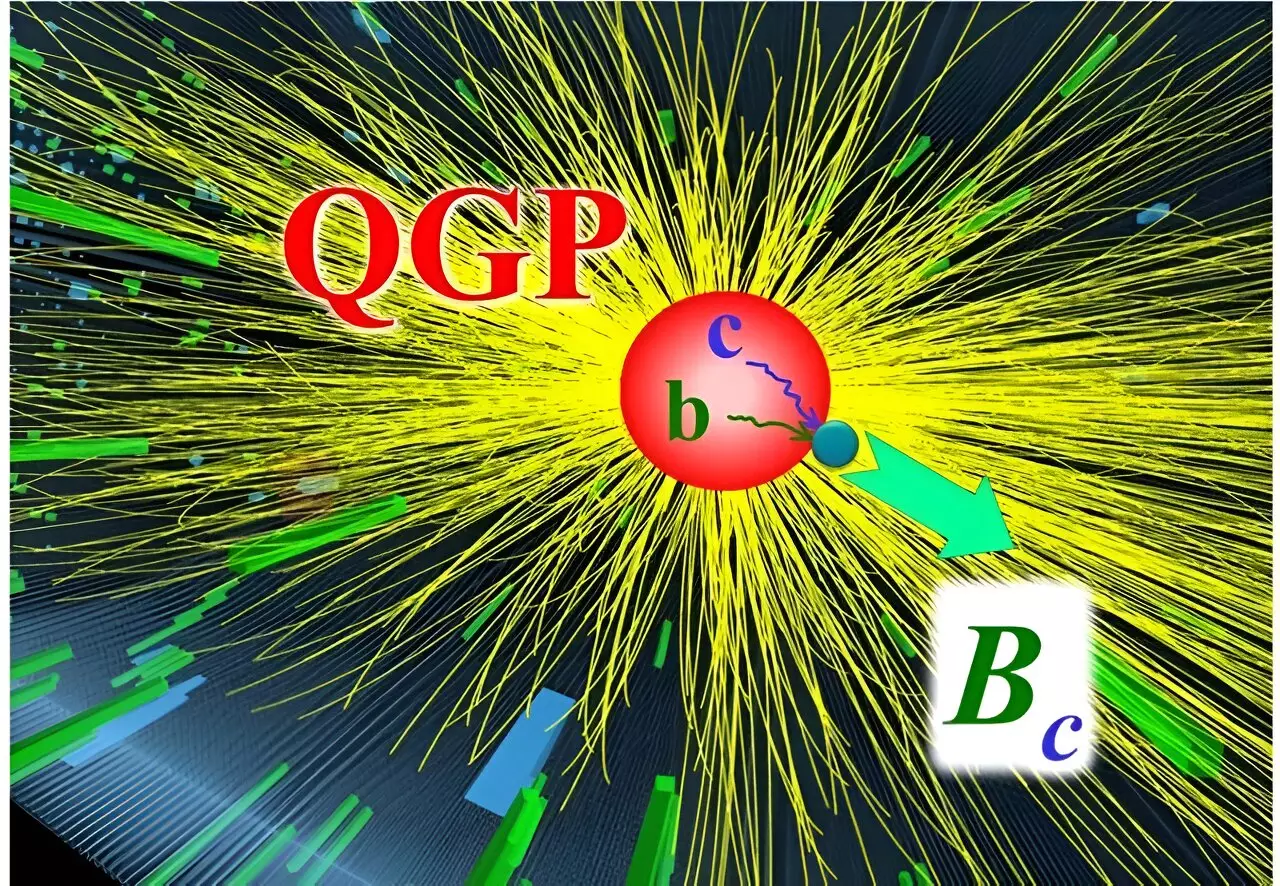In a recent study conducted by researchers from the HEFTY Topical Collaboration, the recombination of charm and bottom quarks into Bc mesons in the quark-gluon plasma (QGP) was investigated. The team developed a transport model to simulate the kinetics of heavy-quark bound states within the expanding QGP fireball that forms during high-energy heavy-ion collisions.
The researchers focused on studying the unique signatures of QGP formation in heavy-ion collisions, as opposed to proton-proton collisions. This distinction is crucial as the QGP only exists for a brief period before decaying into various particles that can be detected by specialized equipment. By tracking signatures produced by specific types of particles, researchers can confirm the presence of a QGP.
Through theoretical simulations of charm and bottom quarks diffusing through the QGP, the team discovered that the recombination of these quarks significantly enhances the production of Bc mesons. This recombination process is exclusive to heavy-ion collisions and serves as a clear signature of QGP formation, making it a valuable tool for detecting the presence of the plasma.
The researchers used realistic spectra of charm and bottom quarks, derived from their diffusion through the QGP, to assess the recombination processes. The results indicated a substantial increase in the yield of Bc mesons in lead (Pb) nucleus collisions compared to proton collisions. This effect is most pronounced in head-on collisions of Pb nuclei, where a sizable QGP fireball rich in charm and bottom quarks is created.
The theoretical calculations conducted by the team align with preliminary data from the CMS collaboration at the Large Hadron Collider (LHC). However, the current data lack the sensitivity needed to detect slow-moving Bc mesons, setting the stage for future experiments to verify this unique signature of QGP formation. The upcoming data will play a critical role in validating the findings of this study and further advancing our understanding of the recombination of quarks in QGP.
Overall, the research conducted by the HEFTY Topical Collaboration sheds light on the intricate processes occurring during high-energy heavy-ion collisions and provides valuable insights into the behavior of heavy-quark bound states in the QGP. The enhanced production of Bc mesons through quark recombination serves as a promising avenue for studying the formation of the plasma and opens up new possibilities for future investigations in this field.


Leave a Reply
You must be logged in to post a comment.